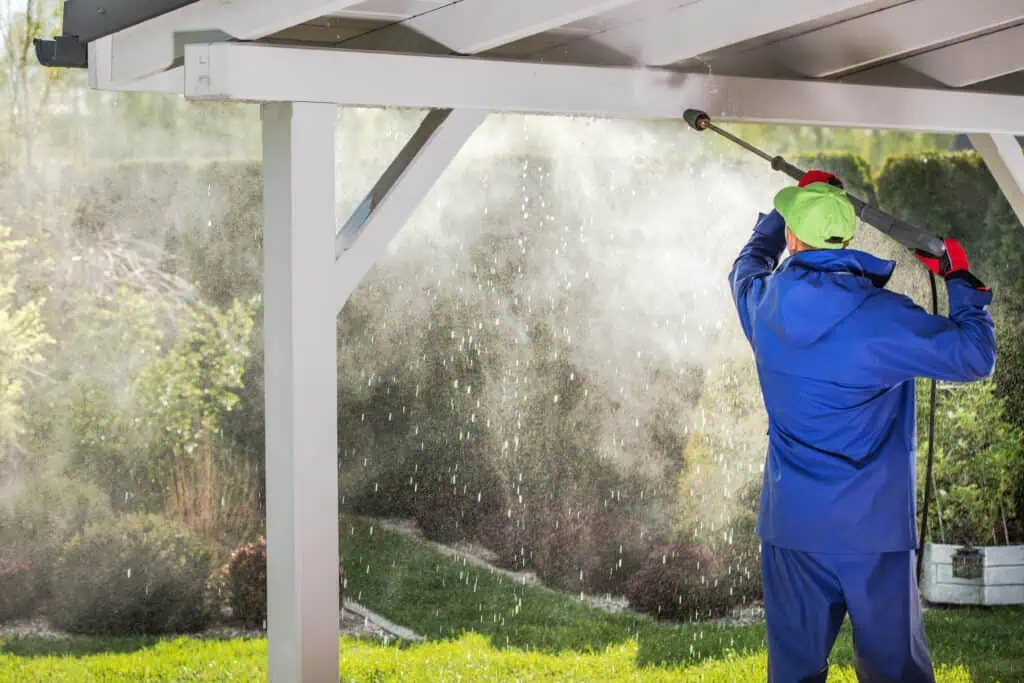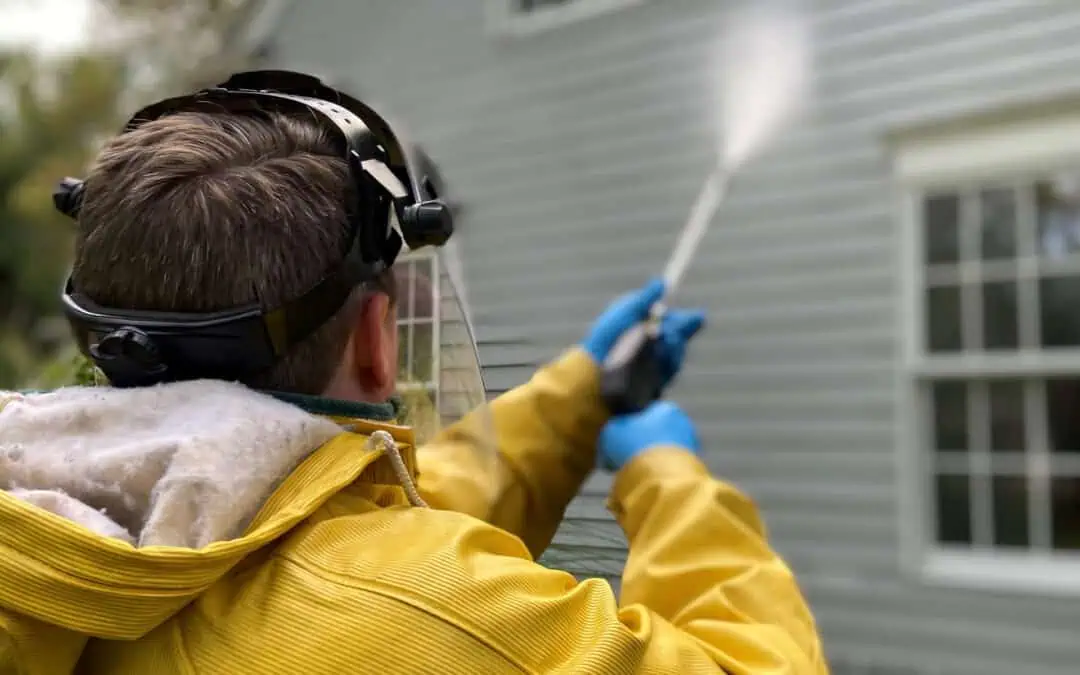Keeping a building’s exterior looking fresh isn’t just about aesthetics—it also protects the structure from damage over time. But when it comes to cleaning, property owners often wonder whether pressure washing or soft washing is the better choice. While both methods have their place, professional pressure washing services know that using the wrong one can lead to lackluster results or even costly repairs.
What Sets Pressure Washing and Soft Washing Apart?
Though they might seem similar at first glance, these two cleaning techniques serve different purposes. Imagine a property manager trying to remove mold from a painted stucco wall with an industrial-grade pressure washer—only to watch the paint peel away. Switching to soft washing would have tackled the stains safely without harming the surface.
Here’s how the two methods break down:
- Pressure washing: Best for tough surfaces like concrete, brick, and stone. This high-pressure technique blasts away grime, oil, and deep-set stains.
- Soft washing: Ideal for delicate surfaces like roofing, siding, and wooden decks. It relies on biodegradable cleaning agents and low-pressure water to remove dirt and organic buildup without causing damage.
Choosing the right method keeps exterior surfaces looking great while extending their lifespan.
How Pressure Washing Tackles Stubborn Grime
When it comes to high-traffic areas covered in grease, mold, or years of dirt, pressure washing is the go-to solution. Professional-grade equipment can generate water pressure up to 4,000 PSI, making it one of the most effective ways to clean driveways, sidewalks, and commercial buildings.
This method works particularly well for:
- Stripping away oil and grease stains from concrete driveways and parking lots.
- Removing graffiti or peeling paint from brick and stone facades.
- Eliminating moss and mildew buildup from patios and exterior stairways.
However, it’s not a one-size-fits-all solution. The Environmental Protection Agency (EPA) warns that improper use of high-pressure washing can create runoff pollution, impacting local waterways. That’s why professional cleaning services follow strict containment protocols to prevent environmental harm.
Why Soft Washing Is Best for More Delicate Surfaces
Some materials can’t handle the force of a pressure washer. Soft washing provides a safer alternative by using eco-friendly detergents to break down dirt, algae, and bacteria before rinsing everything away with low-pressure water.
Soft washing is especially useful for:
- Removing black streaks, mold, and lichen from roofs.
- Cleaning siding, shutters, and wooden fences without causing deterioration.
- Washing windows, solar panels, and decorative features without the risk of cracking or etching.
The Centers for Disease Control and Prevention (CDC) notes that untreated mold and mildew can contribute to respiratory issues and even structural decay. Regular soft washing not only keeps a property looking its best but also helps create a healthier living environment.

Which Cleaning Method Works Best for Different Surfaces?
Using the wrong cleaning method can lead to unnecessary damage. While pressure washing relies on force to clear away grime, soft washing neutralizes contaminants with specialized cleaning solutions before rinsing them away.
Here’s a quick comparison:
- Pressure washing: Best for hard surfaces that need deep cleaning.
- Soft washing: Targets organic buildup without harming delicate materials.
Matching the right approach to each surface ensures a thorough clean without the risk of erosion, water intrusion, or ineffective cleaning. Professional exterior cleaners assess the surface type before determining the safest and most effective method.
Where Each Method Works Best
The right technique depends on the surface material, level of contamination, and exposure to environmental conditions. High-traffic areas often require pressure washing, while soft washing is better suited for moisture-sensitive or painted surfaces.
- Pressure washing: Ideal for concrete driveways, sidewalks, and stone patios.
- Soft washing: Safe for roofs, vinyl siding, and wooden decks.
- Combination cleaning: Useful for properties with a mix of surfaces needing different treatments.
Choosing wisely prevents long-term damage while keeping exterior features in top shape.
Why Professional Cleaning Services Are Worth It
While it’s tempting to handle exterior cleaning as a DIY project, professional pressure washing services offer significant advantages. Trained technicians use industry-grade tools and eco-friendly detergents to deliver a deeper clean without risking structural damage.
Some key benefits include:
- Advanced equipment that cleans more effectively and lasts longer.
- Safe, biodegradable cleaning solutions that protect landscaping and prevent harmful runoff.
- Compliance with safety regulations to prevent accidents and property damage.
The Occupational Safety and Health Administration (OSHA) emphasizes that handling high-pressure cleaning equipment without proper training increases the risk of injuries and property damage. A professional cleaning service ensures a safe and efficient process that preserves both the building and its surroundings.
Common Mistakes in DIY Exterior Cleaning
Many property owners unknowingly cause damage when attempting to clean their exteriors. Too much pressure on fragile surfaces can lead to cracks, peeling, or warping, while incorrect cleaning solutions can stain or degrade materials.
Some frequent errors include:
- Using high pressure on wood or vinyl siding, leading to cracks and warping.
- Applying the wrong detergents, causing discoloration or residue buildup.
- Failing to rinse thoroughly, leaving behind soap streaks that attract dirt faster.
Avoiding these mistakes can save time, money, and unnecessary repairs in the long run.
Making the Right Choice for a Cleaner Property
A well-maintained exterior doesn’t just boost curb appeal—it also prevents long-term damage. Pressure washing is the best option for tough, durable surfaces, while soft washing provides a gentler approach for more delicate materials. Understanding the difference between the two ensures effective cleaning that preserves the structure’s integrity for years to come.







